SANTA BARBARA (Day 6 - part 1)
Yesterday (Day 5) had been spent washing the dog, more socializing, and packing and preparing for our trip up the coast. This morning, we set out around 8 am.

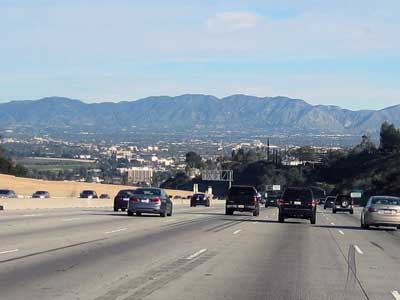


The 101 .... The California Highway Patrol in action


Catching the PCH (Pacific Coast Highway) or the 1
State Route 1 runs up along most of the California coast, with a total of almost 660 miles. It stretches from Orange County to Mendocino County. Its first section, in the Big Sur region, opened in the 1930s. Over the years, sections of the route had various names and numbers. In 1964, the state highway renumbering officially designated it as SR 1.

A marker designating El Camino Real
In California, El Camino Real (meaning The Royal Road or The King's Highway) refers to the 600-mile long path which connects 21 Spanish missions and stretches from San Diego to Sonoma. Originally all roads built by the Spanish kingdom, both in Spain and its colonies, were "royal roads." Once Mexico won its independence from Spain in 1810, no road in Mexico (including California) was a camino real. But in the early 1900's, efforts were made to preserve the historic trail. The name was revived and distinctive bells were cast and placed along the route, hung from a "Franciscan walking stick." Due to theft, vandalism and other forms of loss, the 450 bells dropped down to just 80. A restoration program in 1996 led to their replacements.

Seems a bit too far south for his liking!
Eventually we arrived in Santa Barbara. There is evidence that people dwelled here at least 13,000 years ago. When European explorers first arrived, some 9,000 Cumash lived along these coastal areas. Spanish explorer Sebastian Vizcaino gave the area its name in 1602. The first permanent European settlers were Spanish missionaries and soldiers in 1782.
We walked around the old downtown around State Street.




Of course, we couldn't resist a quick brewery stop... even at 11 in the morning! Night Lizard Brewing Company not only had lovely beers, but made its mission to bring awareness to current environmental challenges facing the central coast.... especially its various critters.


The desert night lizard is native to the southwest. Because of their highly secretive lifestyle, they were thought to be nocturnal but are actually strictly diurnal. They evolved to live in very narrow environmental niches, such as rock crevices or damp logs, and may spend their entire life under the same cover. They can easily to change their color from light olive to dark brown, are good climbers, and give birth to live young. The one to three babies are only the size of a toothpick when born.


The Song Sparrow sour, a 2018 grand cru, the Tiger Salamander saison, and a nitro Scripps stout
The Scripps's murrelet is a small type of auk that breeds on the local Channel Islands. By the end of the 1900s, it was considered to be one of the most endangered species of auk, being threatened by introduced predators (such as rats and cats) and oil spills. This is no longer the case... not because their status has improved, but rather because other auks have become rarer.


Clayton, one of the brewers, gave us a quick tour of the brewing equipment.
We continued our walk through town towards the wharf.

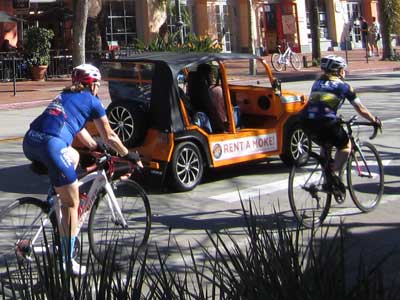
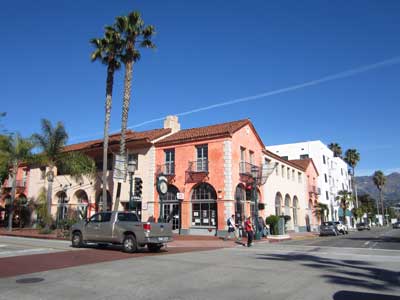





The train station


Sand sculpture on the beach

Known as the Popcorn Man, Everett Nicholin (1890-1980) was apparently an icon here.
We arrived at Stearns Wharf.
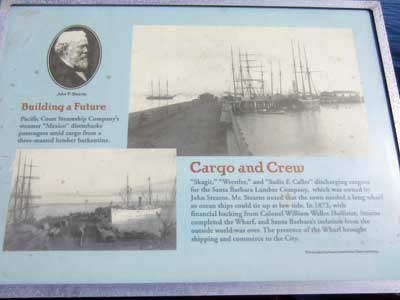

John Peck Stearns (1828-1902) arrived from New England in 1867. He purchased land at the end of State Street and started a lumberyard. He began construction of a wharf in 1872. Before then, passengers and cargo had to be rowed ashore through the breakers and kelp. The wharf allowed for the docking of larger ships. When a railroad line was added in 1877, lumber schooners could unload their cargo directly onto flatcars. Unfortunately it was damaged by severe storms and eventually abandoned in 1923. A breakwater was built in 1928 to help protect the wharf. When a restaurant was built on the wharf in 1941, it replaced all shipping and transportation as the structure's main source of income.

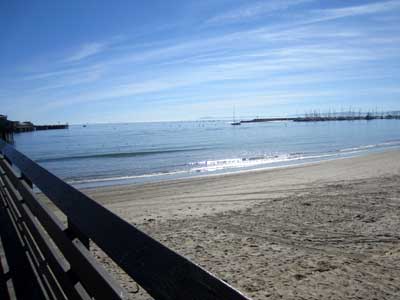


... A cormorant dries itself in the sun.



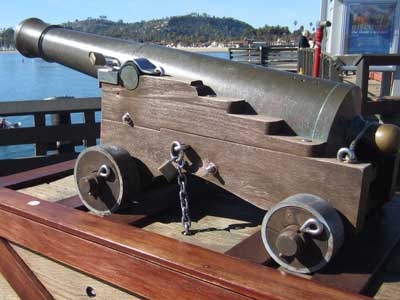
... This cannon is a replica of the six pound bronze guns on the U.S. Revenue Cutter "Lawrence" when it patrolled the California coast from 1843 to 1851.



Reaching the end of the wharf


Fishing
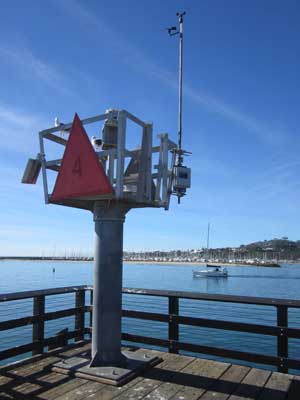



Overlooking the channel out to the Channel Islands


Sailboats ... and an oil rig



Shark head .... and "Moby Dick" by Beth Amine. Sperm whales can reach up to 55 feet in length and 53 tons in weight. They eat fish, squid... and apparently Scott.


Turning around and heading back
Back in town...




return • continue

